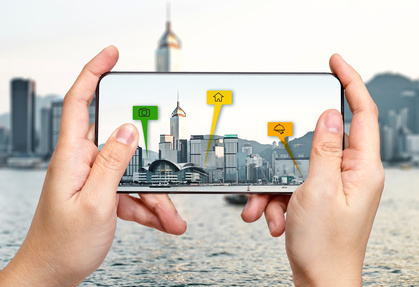Who can forget Pokémon Go? It wasn’t the first AR (augmented reality) app when it premiered in 2016, but it was certainly the app that introduced most of the world to the concept of overlaying a digital reality on our real one. Later this year, we’ll see it’s much-anticipated successor, Wizards Unite. However, AR games are just the tip of what’s happening in the AR world. Yes, it’s shaping the future of play (and possibly replacing traditional toys for some?), but its other applications are getting pretty interesting.
- Amazon’s AR shopping tool is now available on Android [Engadget] “Last year, Amazon debuted AR View, its augmented reality shopping tool that lets you see how certain items will look in your home before you buy them. At launch, it was only available on iOS, but as of today, 9to5Google reports, it’s available on Android devices as well.”
- 16 Amazing AR Apps Transforming Education [Stephen’s Lighthouse] “Augmented reality makes education more fun and engaging. By adding a new layer of information on top of the physical environment, any concept becomes fun for the students to explore. AR provides more opportunities than most teachers are aware of. They just have to explore the right apps.”
- YouTube is adding a new AR green screen effect to its stories feature [The Verge] “The technology, explained in full over on Google’s research blog, actually seems pretty impressive: the company is using neural networks to identify and separate a subject from the background. It’s the same net effect as a green screen, allowing creators to insert whatever they want as their new backdrop in real time, but it’s made all the more impressive because it doesn’t require an actual green screen to make separating the subject easier.”
- Microsoft’s mad scientists are making AR more tactile [Engadget] “It’s a squeezable, gun-like device that let’s you pick up and handle virtual objects and, thanks to haptic feedback, feel their softness and texture. It can even detect the differences between users’ grips and the ‘situational context of the virtual scene,’ as Microsoft puts it.”
From the Ohio Web Library:
- Living in your design: Virtual and augmented reality is enabling engineers (Smith, B. (2017). Living in your design: Virtual and augmented reality is enabling engineers. Roads & Bridges, 55(12), 32. )
- Augmented Reality Goes to Work (DICKSON, B. (2017). AUGMENTED REALITY GOES TO WORK. PC Magazine, 90. )
- Virtual and Augmented Reality as Library Services (GREENE, D., & GROENENDYK, M. (2018). Virtual and Augmented Reality as Library Services. Computers In Libraries, 38(1), 4-7. )


